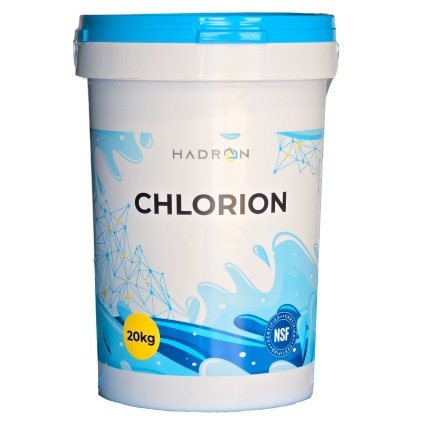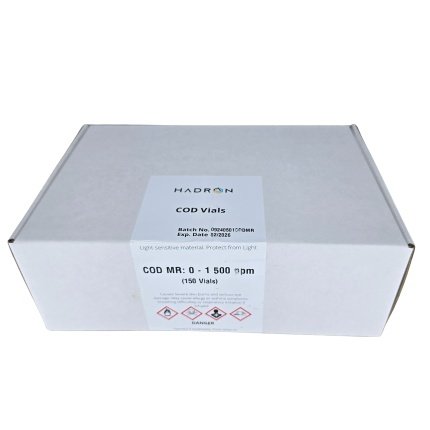

Standard Shipment
3 - 5 working days
IMPORTS
6 - 8 Weeks


R3,985.00 – R5,810.00Each
High-Range Analytical Chemical Oxygen Demand (COD) vials are essential tools for accurately measuring organic pollution levels in water and wastewater samples.
| Weight | N/A |
|---|---|
| Size |
100 Pack ,150 Pack |
High Range Chemical Oxygen Demand (COD) vials are specialized laboratory tools used for quantifying chemical oxygen demand in water and wastewater samples that contain elevated concentrations of organic substances. These vials are essential for environmental monitoring and provide key insights into the organic pollution levels present in various water bodies. The primary purpose of these vials is to accurately measure the amount of oxygen that is consumed during the oxidation of organic matter in water, serving as an important indicator of water quality.
Each COD vial is carefully constructed to include a mixture of reagents that facilitate the chemical reactions necessary for accurate measurement. Specifically, these vials often contain a strong oxidizing agent, usually potassium dichromate, combined with acidic conditions to ensure optimal reaction rates. The concentrations of these reagents are specifically tailored for samples where organic loads exceed the measurement limits of lower range COD vials. As a result, vials can accommodate COD measurements in samples that contain up to 15,000 mg/L of oxygen demand, whereas low range vials may only measure up to 1500 mg/L.
The importance of precise COD measurement cannot be overstated, particularly in the context of wastewater treatment and ecological health. Accurate readings are vital for process control in wastewater treatment plants, enabling operators to adjust treatment processes according to organic load fluctuations. Furthermore, COD vials play a crucial role in regulatory compliance by helping organizations meet environmental standards. They also aid in assessing the effectiveness of pollution control measures and contribute to broader water quality analysis and environmental management efforts.
Chemical Oxygen Demand (COD) vials are critical tools in various industries for assessing the organic pollutants present in water and wastewater. One of the primary applications of these vials is in municipal wastewater treatment plants, where monitoring COD levels is essential for ensuring compliance with environmental regulations. Understanding the organic load helps operators optimize treatment processes and maintain water quality standards.
In industrial settings, COD vials are used for effluent testing to provide insight into the efficiency of treatment systems. Industries such as pharmaceuticals, food and beverage, and textiles generate significant amounts of organic waste, necessitating accurate measurement of COD to identify effective treatment methods. Environmental research also relies on these vials for assessing water quality in bodies of water affected by industrial discharge or agricultural runoff.
To achieve accurate and reproducible results when using COD vials, several best practices must be adhered to. First, it is vital to follow the manufacturer’s instructions precisely for sample collection and vial preparation. This ensures that the samples remain unaltered during the testing process. Additionally, proper handling of the vials is crucial to prevent contamination that could affect the results. Labs should employ clean sampling techniques and utilize personal protective equipment when handling reagents.
Storage conditions additionally play a pivotal role in the integrity of COD vials. They should be stored in a cool, dark place to prevent degradation of the reagents prior to use. Regular calibration of analytical equipment is also recommended to ensure precision in measurement. When interpreting COD results, it is important to consider factors such as dilution factors, sample matrix effects, and cross-references with other water quality parameters.
Overall, adherence to best practices in the usage of COD vials is essential for producing reliable and consistent data. By following these guidelines, individuals and organizations can increase the accuracy of their COD analysis and make informed decisions based on the data obtained.
CERTIFICATE OF ANALYSIS
SAFTY DATA SHEET


3 - 5 working days
6 - 8 Weeks
No account yet?
Create an AccountWe use cookies to provide you with the best possible web experience. Clearing cookies may limit your banking functionality. Some cookies are strictly necessary for our website to function properly and cannot be switched off. To maintain these settings view "Cookie Preferences" in the menu